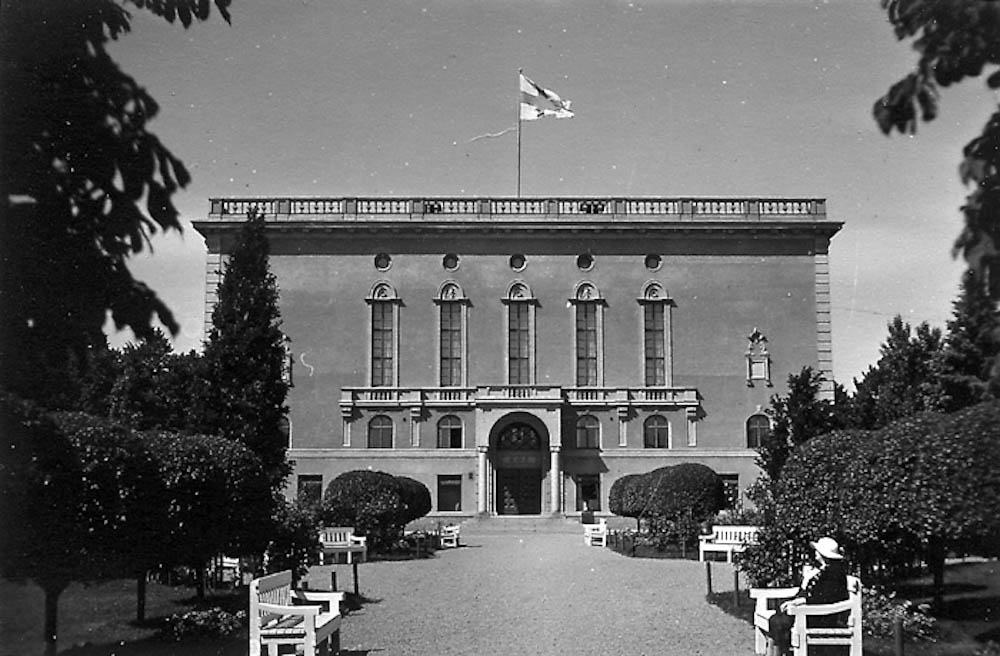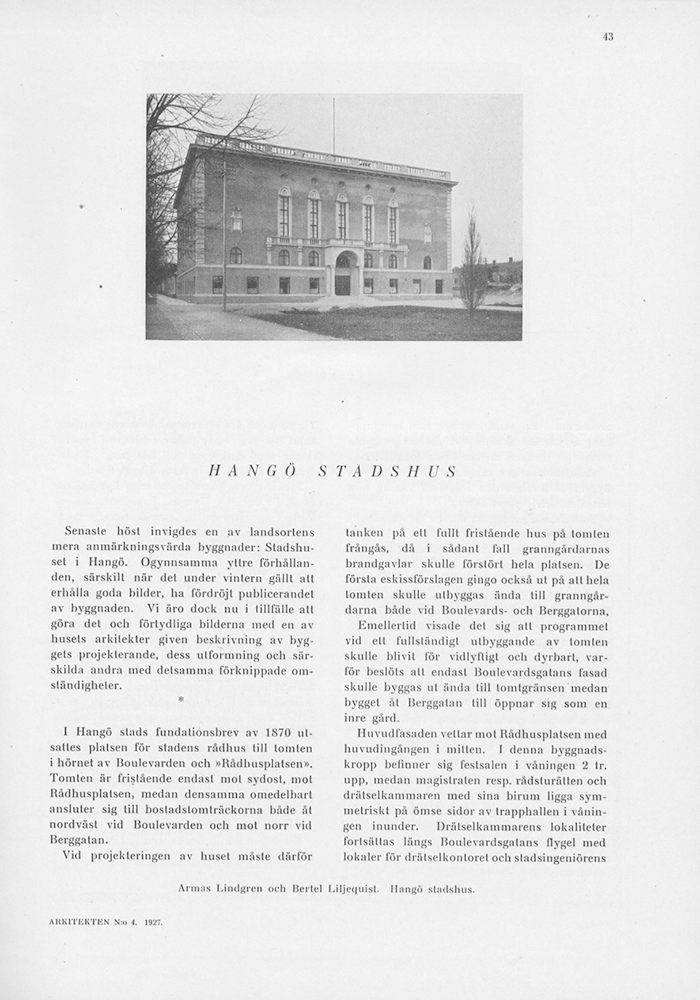
Hanko City Hall was completed in September 1926. The building was designed by Armas Lindgren and Bertel Liljequist. Activities in the town hall were lively. There were concerts, plays, dance performances and lectures. Of course, there was also an entire city administration building. In 1941, a continuation war broke out, and Russian troops blew up the town hall as they retreated from the city in December. The current town hall was completed in 1951.
Laura Lotta Andersson | Hanko Museum
May 16, 1925 was a big day in Hanko when the foundation stone of Hanko's first town hall was laid on the plot at the corner of Boulevard, Raatihuoneenpuisto and Vuorikatu. A large crowd had arrived to witness this solemn moment. After all, the city had already existed for 51 years, and finally got its own town hall. And it would be handsome. The drawings were displayed in the window of Hanko's bookstore. The designers were Armas Lindgren and Bertel Liljequist. At the turn of the 20th century, Armas Lindgren had worked with Herman Gesellius and Eliel Saarinen, but from 1905 Lindgren had his own office, where Liljequist came to work in 1914.
The town hall was considered very handsome in a town of 8,600 people. The main facade faced Raatihuoneenpuisto. The stone base and columns were made by Hankon Granit, otherwise the four-story building was plastered. The town hall was completed in September 1926, but in November there were two days of celebrations when the building was inaugurated. Here were the facilities for the city's various agencies and the meeting rooms of the city council. The large ballroom and the conservatory faced Raatihuoneentor. The building also housed a library, a Savings Bank, Karl Boström's freight forwarding company, a restaurant Raatihuonenkellari, a guardianship committee and Lotta Svärd.
The activity in the town hall was lively if you follow all the events that were organized in the ballroom. There were concerts, plays, dance performances and lectures. Of course, the entire city administration was also in the building. Hankonlehti always read which days and how many hours each office was open.
In the 1930s, the situation in Europe became gloomy when totalitarian statesmen rose to power, but the outbreak of the Winter War was a shock nonetheless. The end of the war on March 13, 1940 led to Hanko being handed over as a Soviet naval base for 30 years. The city had to be emptied in ten days, and Hanko's evacuation was directed from the city hall.
In the summer of 1941, the Continuation War began and this led to the Russians leaving the city in December 1941. Before that, however, they blew up the town hall and the water tower. The church was also mined, but it did not explode. Only the wall facing the Boulevard remained of the town hall. The house only had time to stand for 15 years. When it was built, it was considered a prominent building in the countryside.

The new water tower was built quickly, but the town hall had to wait a few years. Construction work began in 1950 and was completed in 1951. Hangö newspaper closely followed the construction project, which progressed slowly due to a lack of materials, especially glass, and there were also varnishes. The architect was Bertel Liljequist, who was already involved in the design of the previous town hall. He had Sam Salvesen to help him. According to the then mayor Elis Vennström, the town hall was a symbol of the will of the people of Hanko to rebuild the city better and more beautiful than it was in 1940, when Hanko was given up. Representatives of twin cities from Sweden's Halmstad and Denmark's Gentofte were also present to celebrate the new town hall.
The style of the new town hall was quite different compared to the previous one. The house consists of two parts. Facing the boulevard and Kirkkopuisto is a four-story part with the city council hall and office space. Kirkkopuisto and Vuorikatu have a two-story section that originally housed a library, which today houses the town hall's gallery and offices, and a banquet hall with heating in the other wing.

Photos: Hanko museum











